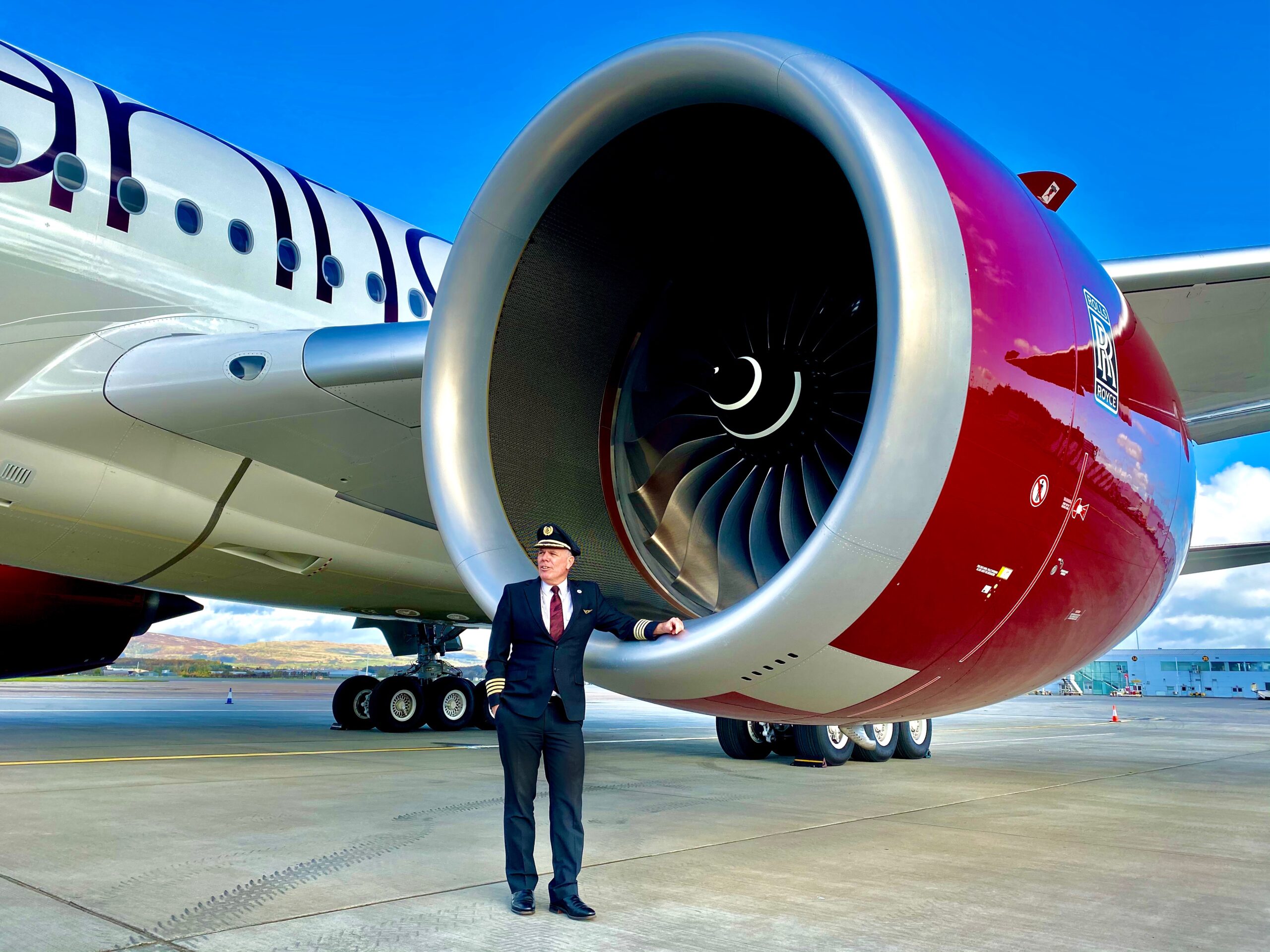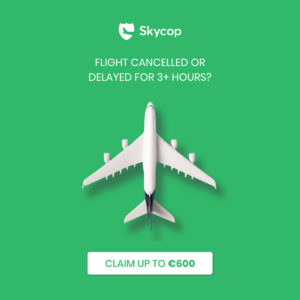Captain Chris Pohl is arguably one of the best content creators, from an airline pilot's perspective, in the business. He uses social media to promote good causes and to encourage people to support the aviation and travel Industries. Through his amazing content, created from his office in a Virgin Atlantic A350-1000, he is out there to support all his grounded colleagues worldwide.
I follow Captain Chris as I find him to be genuine, experienced and inspiring. Here is Captain Chris's story.
Tell us your background
I was born and grew up in Melbourne, Australia.
My love of flying came from my father, he loved aviation and had considered becoming a pilot before I was born, although he lost his right eye in an accident on a building site and his dream of becoming a pilot disappeared. He stuck with Building, but he passed his dream onto me subtly; by giving me model airplanes and books on airplanes each Birthday and Christmas.
My airline career has taken me all around the world. I began my airline career with Ansett Airlines, flying the F-27 and then the A320, as an Airbus launch customer in 1989.
I left Australia at the end of 1989, after an Australia wide Industrial dispute.
I arrived in the UK in 1990 and cleaned aircraft while converting my Australian ATPL to a UK ATPL, I then flew for Air Europe on the Fokker 100
- KLM F100 1991
- Swissair F100 1991
- Eurocypria A320, Larnaca, Cyprus 1991-93
- Air Lanka (SriLankan) A320 1993
- Virgin Atlantic A340-300 1994 to today, (Captain same year).
- 1998 Training Captain,
- Now: Airbus A330/A350 TRI/TRE
- 24,000 total hours (20,000 Airbus)
Where it all began?
It wasn’t until I was 12 that I first flew, it was on a TAA (Trans Australian Airways) Boeing 727; we were going on a family holiday to the Gold Coast, Queensland. As we walked up the aircraft steps, my father pushed me in front of him and asked the flight attendant if his son could see the flight deck; the next thing I knew I was being offered to stay in the cockpit, I was quickly strapped into the jump seat, behind the Captain by the Flight Engineer, and was ready for take off. I was completely mesmerised and excited by this experience. As we rotated into the sky, I knew at that moment that I wanted to become an airline pilot; I have no other memories of that family holiday.
Tell me of the early struggles and challenges you faced as a student pilot or junior pilot.
At the time I then worked everyday as a paperboy, at the local supermarket; pushing trolleys and stacking shelves. I also worked on building sites most weekends with my Dad and Uncles. I passed Maths and Physics and left High School at 18, I then immediately began flight training to become a commercial pilot by 19.
My Parents didn’t have the money for the CPL course; but I managed to save half the course fee, by working and saving from the ages of 12 -18; my Uncle loaned me the other half (which I paid back within 3 years). I worked at a flight school at Moorabbin airport; cleaning aircraft, refuelling and working the reception desk most weekends.
Once I qualified with a CPL, I did any flying that was available to log my flying hours.
I qualified for an Instructor rating and gave flight instruction at Moorabbin, Melbourne, then later at Coolangatta Gold Coast.
I flew ANY charter, in ANY aircraft including:
- News Crews
- Night freight
- Target towing for the Royal Australian Navy
- Tourist flights to the Great Barrier Reef, De Havilland Beaver (on floats)
- I even flew dead people for a funeral company, in a Beechcraft Baron.
- Anything for flying hours and precious twin time
The biggest struggle was finding my first jobs, partly due to my limited experience but also because I was a young looking 19 year old with a dodgy moustache. I have been unemployed 6 more times in my career and I searched the world for jobs, this was also prior to the internet being part of everyday life.
What did you learn to fly in? and how many hours before you went solo?
I learnt to fly in a PA-28 (Cherokee) at NASA, Cessnock, NSW; it was an full-time intensive 9 month CPL/ATPL course. I flew almost every day and went solo in 10 hours.
How many airplane types have you flown and what are these types?
In Australia I flew mostly Light aircraft built by Cessna, Piper, Beechcraft, Mooney and even the deadly Mitsubishi MU-2
Cessna: 150, 151, 152, 172, 182, 206, 210, 310, 401, 402, 414 and 421
Piper: PA-18, 23, 24, 26, 27, 28, 31, 32, 34, 34, 38, 39, 44 and 60
Beechcraft: Bonanza, Baron, King Air, Aero commander plus a few others
I possibly flew about 40 different light GA aircraft, logging 2,500 hrs; flying mainly up the East Coast of Australia, between Melbourne to Cairns. I also flew inland NSW and Queensland, along with trips into the The Northern Territory to Alice Springs and up to Darwin.
Airline aircraft: Fokker F-27, Fokker F100, Airbus A320, A330-200, A340-300, A340-600, A350-900 and A350-1000
What is your fondest memories as a captain?
As a young Captain, flying into Hong Hong’s Kai Tak airport; on the famous Runway 13 Checkerboard approach, with both my Dad and brother in the flight deck with me.
Your first flight as a captain?
From London Heathrow to Hong Kong Kai Tak airport, with my girlfriend (now wife) sitting in Upper Class and a few technical problems to keep me busy.
How long as a captain before you felt comfortable in the role?
During my Command Training I felt confident and capable, However when I achieved around 10,000 hours I felt like I was very “comfortable” in the role and in my career.
What kind of plane would you most like to fly?
Concorde. Every pilot who never had the chance to fly her will say the same. She was the ultimate airliner and nothing as iconic has existed since.
Best advice you ever got?
Hours, hours, hours. If you’re paying for the hours, fly the cheapest aircraft. If you’re being paid by the hour, fly the slowest aircraft. Hours = experience = employment opportunities. Always say “YES”.
What advice do you have for new pilots?
For a long and successful commercial career, you need Hours and Type Rating. Never fly an old aircraft, always work to get hours (experience) on the newest and most modern airliner available.
In 1989, when I was flying the F27 with Ansett, I was offered a place on the B727 (which I loved), but I bid for the A320, which I first flew in 1989, and I knew it was the future.
When I joined Virgin Atlantic I wanted to fly the 747, but I stayed on the Airbus fleet to be able to always fly the newest airliners. Also, remember that flying is an international career, don’t wait for the “perfect job” to fall at your doorstep; be prepared to travel and see the world to gain flying experience and more importantly “life-experience”. I lived and flew from 6 different countries before landing my dream job with Virgin Atlantic.
Ever declared an emergency?
Many times in light aircraft for all sorts of technical issues. The most memorable was in a Piper Aztec, over the Snowy Mountains between Canberra and Melbourne. A fuel injector feed line snapped, feeding fuel directly onto the hot engine which subsequently caught fire. I shut down the engine and cut off the fuel, this eventually stopped the fire and we flew to Moorabbin on the remaining engine. I had a Channel 9 News Crew onboard, who filmed and sensationalised the event for TV. I was 19 and a TV “pilot hero.”
Ever tempted to own a small plane?
Not until recently. My feelings on the matter changed after flying the amazing Sling TSI, at the Sling Pilot Academy, Torrance, California. An amazingly capable and modern light aircraft. I can’t wait to fly it again.
Follow Captain Chris on instagram




